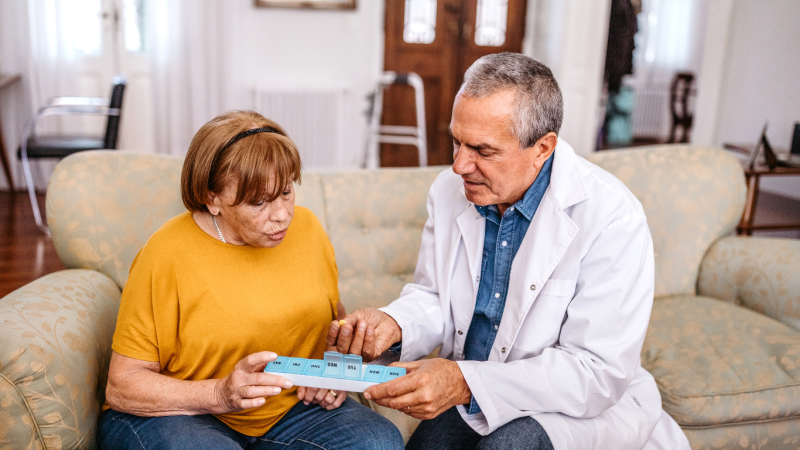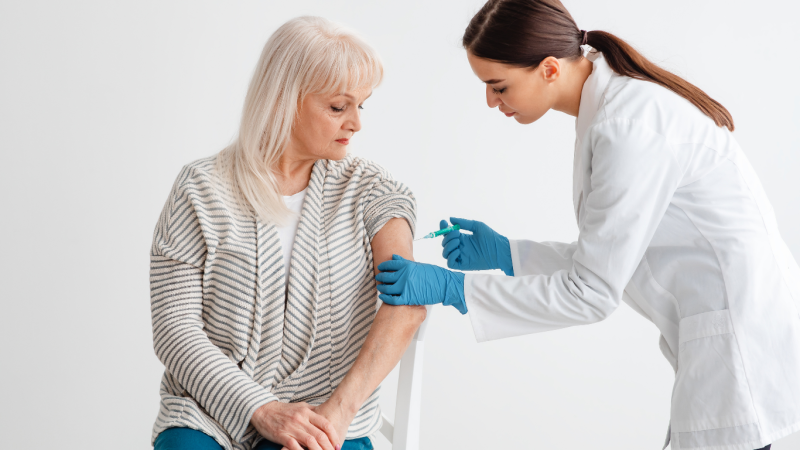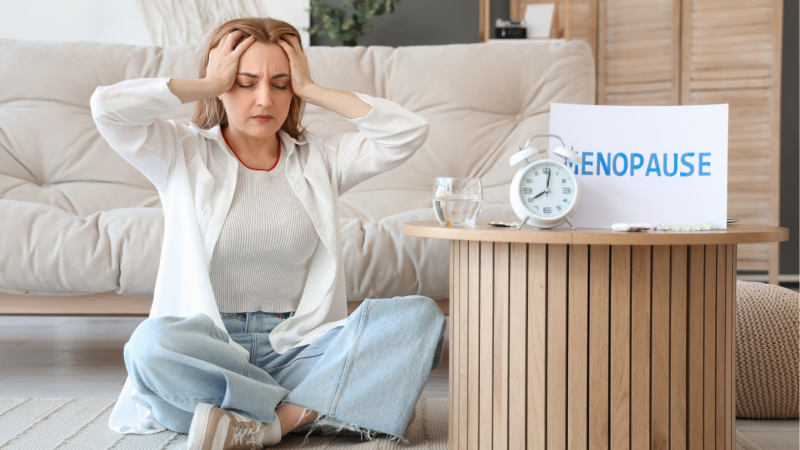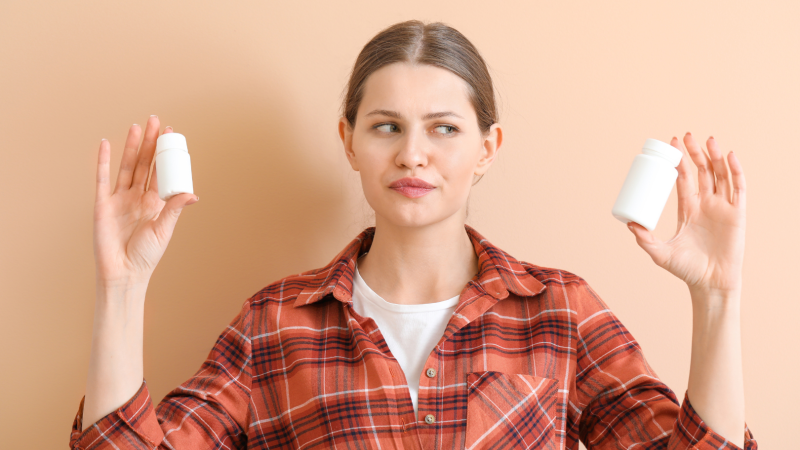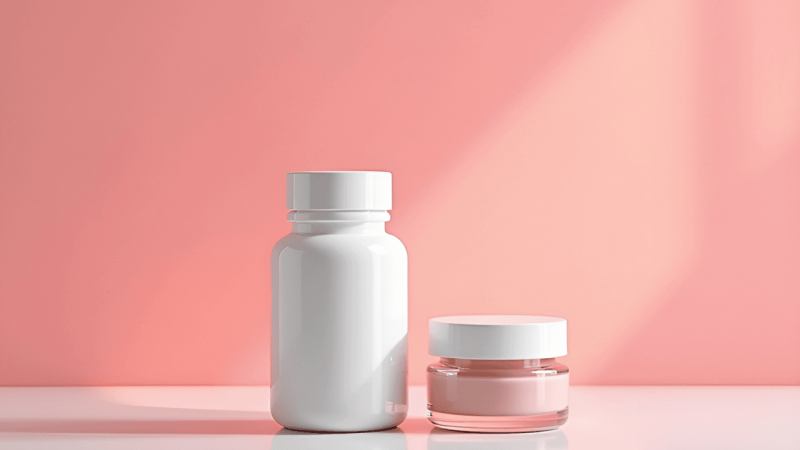
The Complete Guide to Every NAD+ Precursor
NAD+ stands at the center of nearly every major biological process in our cells. This remarkable coenzyme, known scientifically as nicotinamide adenine dinucleotide, enables energy production, DNA repair, and hundreds of other vital cellular functions. Without it, our cells would essentially stop working.
But there’s a hitch: our NAD+ levels naturally decline with age, dropping significantly by the time we reach our later years. This decline has been linked to many aspects of aging and metabolic dysfunction, spurring intense research into ways we can maintain healthy NAD+ levels throughout life.
Luckily, our bodies can synthesize NAD+ from several different compounds known as NAD+ precursors. These are specific molecules that our cells can convert into NAD+ through well-understood biological pathways. We’ve identified nine distinct precursors that can boost NAD+ levels in humans.
In this guide, you’ll learn about all nine established NAD+ precursors, from the well-studied workhorses like nicotinamide riboside (NR) and nicotinamide mononucleotide (NMN) to the lesser-known players like tryptophan and dihydronicotinamide riboside (try saying that five times fast).
Each precursor has its own fascinating story, complete with advantages and quirks in how our bodies process them.
In this article, we discuss:
- What NAD precursors are and how they can optimize your health for a vibrant, active future.
- 9 known NAD precursors that can elevate NAD levels for increased vitality and well-being.
- Each precursor’s unique pathway to NAD+ production and key findings from studies.
- How to measure your cellular NAD+ levels accurately and track the effectiveness of supplementation.
What are NAD+ Precursors?

If you’ve been researching ways to boost your NAD+ levels, you’ve likely encountered “NAD boosters” or NAD supplements in health and longevity discussions. But what exactly are these compounds, and how do they work?
NAD+ precursors are specific molecules that your body can convert into NAD+ through various biological pathways1. They can be thought of as raw materials your cells need to manufacture NAD+. While all nine precursors ultimately lead to NAD+ production, they take different routes through your cellular hardware and your body processes each one differently.
These precursors fall into several main categories:
- Vitamin B3 derivatives (like niacin and niacinamide)
- Advanced compounds (such as NR and NMN)
- Amino acids (primarily tryptophan)
Research has shown that supplementing with these precursors can effectively raise NAD+ levels in various tissues, though their efficiency and effects can vary significantly. Some require multiple conversion steps before becoming NAD+, while others follow a more direct path. This distinction becomes particularly important when choosing an NAD supplement, as it can affect both the compound’s potency and how quickly your body can put it to use.
The 9 Known NAD+ Precursors

Each NAD+ precursor represents a unique pathway to cellular energy production, with its own set of advantages and characteristics. These nine molecules form the complete family of established NAD+ precursors.
Nicotinamide Riboside (NR)
First discovered in milk and later identified as a vitamin B3 analog, NR has become a leading NAD+ precursor in longevity research. It follows the NRK pathway, where it’s phosphorylated by NRK1/2 enzymes to form NMN before conversion to NAD+. This efficient pathway, combined with excellent oral bioavailability and ability to cross cell membranes, has made NR very attractive for NAD+ enhancement.
Key Findings:
- NR supplementation significantly increased blood NAD+ concentrations in older adults with MCI by approximately 2.6-fold (or 160%) compared to placebo2
- NR supplements boost NAD+ levels by an impressive 60% in healthy adults, according to rigorous clinical research3
- NR shows an excellent safety profile with no serious side effects even at high doses of 2000mg daily4
- Early research suggests NR can reduce key inflammatory markers in heart failure patients5
- NR supplementation appears to increase muscle-repairing satellite cells in human studies6
Nicotinamide Mononucleotide (NMN)
Identified as a key NAD+ intermediate in the 1960s, NMN is the direct precursor to NAD+ in the salvage pathway. While initially thought to require conversion to NR before entering cells, the 2019 discovery of the Slc12a8 transporter revealed a direct cellular uptake mechanism. Just one enzymatic step away from becoming NAD+, NMN has shown remarkable promise in aging research.
Key Findings:
- NMN supplements are proven safe in humans at doses up to 900mg daily with no serious side effects7
- Clinical studies consistently show NMN effectively boosts blood NAD+ levels, with higher doses yielding stronger increases8
- Older adults taking NMN demonstrated measurable improvements in walking distance compared to placebo groups9
- After 12 weeks of NMN supplementation, elderly men showed meaningful gains in grip strength and walking speed10
- While placebo groups continued aging normally, NMN-treated groups showed no increase in biological age markers over a study period11
Nicotinic Acid (NA) / Niacin
Discovered in 1937 by Conrad Elvehjem, niacin was the first NAD+ precursor used therapeutically. It follows the Preiss-Handler pathway, requiring three enzymatic steps to become NAD+. This classic pathway remains significant today, though the characteristic “niacin flush” – caused by prostaglandin release – can limit its practical use.
Key Findings:
- A massive meta-analysis of 119 trials with 35,760 participants showed niacin alone could reduce cardiovascular events12
- Niacin can slash total cholesterol by 25%, LDL by 15%, triglycerides by 50%, while uniquely boosting good HDL cholesterol by up to 35%13
- When combined with statins, niacin therapy was proven via MRI to actually reverse arterial plaque buildup14
- A landmark 15-year study found niacin reduced mortality by 11% in heart attack survivors (p=0.0004)15
Nicotinamide (NAM) / Niacinamide
The most abundant form of vitamin B3 in nature, NAM enters the salvage pathway through conversion to NMN by NAMPT, the rate-limiting enzyme in NAD+ biosynthesis. First isolated in 1935, this flush-free precursor compound is both widely available and well-tolerated.
Key Findings:
- Taking 500mg nicotinamide twice daily reduced new skin cancer formation by 23% in high-risk patients16
- Nicotinamide lowered pre-cancerous skin lesions (actinic keratoses) by up to 20% over a 12-month period17
- Nicotinamide helps repair DNA and preserve skin immunity by preventing UV radiation from depleting cellular energy18
- In glaucoma patients, nicotinamide combined with pyruvate showed promising improvements in visual field tests19
- Clinical trials have consistently shown nicotinamide to be safe and well-tolerated, even at high doses20
Tryptophan (Trp)
This essential amino acid was found to contribute to NAD+ production in the early 1950s. Tryptophan follows the de novo pathway, requiring eight enzymatic steps to become NAD+ – the most complex route among all precursors. While not the most efficient path, this discovery highlighted the intricate connection between protein metabolism and NAD+ production.
Key Findings:
- Higher tryptophan levels appear critical for nutritional interventions to improve mortality rates in vulnerable patients, with nearly 40% better outcomes in high-tryptophan groups21
- Tryptophan supplementation at 1+ gram doses may improve sleep quality by boosting melatonin production and sleep duration22
- Higher dietary tryptophan intake significantly reduced depression and anxiety in healthy participants, highlighting its role in mood regulation through serotonin production23
- Research shows tryptophan supplementation can reduce ADHD symptoms and aggressive behavior in children24
- Daily intake of ~1 gram tryptophan was linked to a dramatic 60% reduction in migraine risk25
Nicotinic Acid Riboside (NAR)
A lesser-known member of the NAD+ precursor family, Nicotinic Acid Riboside (NAR) follows a distinct metabolic pathway involving nicotinamide riboside kinases (NRK1 and NRK2) before entering the Preiss-Handler pathway. This route to NAD+ production differs from other precursors, suggesting potential unique characteristics. Human studies on NAR remain limited compared to more extensively researched NAD+ precursors like NR and NMN.
Key Findings:
- NAR released from cells can be taken up and used as an NAD+ precursor by neighboring cells. Even low micromolar concentrations of NAR were sufficient to maintain viability of cells unable to use other NAD+ precursors
- NAR appears to be a more effective NAD+ precursor than nicotinamide riboside (NR) for maintaining cell viability at low concentrations. About 10 times less NAR was required compared to NR to maintain viability of cells treated with an NAD+ biosynthesis inhibitor26
Dihydronicotinamide Riboside (NRH)
One of the newer additions to the NAD+ precursor lineup, NRH has shown impressive efficiency in preclinical studies. This reduced form of NR appears to bypass certain cellular checkpoints, potentially offering a more direct route to NAD+ production. Research is ongoing to fully understand its potential advantages and safety profile.
Key Findings:
- NRH is a potent NAD+ booster, increasing cellular NAD+ levels by 2.5-10 fold over control values within just 1 hour of administration27
- In obese mice, 7 weeks of NRH supplementation dramatically improved metabolism by enhancing pancreatic function, insulin sensitivity, and fat tissue health through elevated NAD+ and sirtuin activation28
- While promising for metabolism, NRH may have an inflammatory dark side – it can trigger inflammation in immune cells called macrophages through specific cellular pathways29
Reduced Nicotinamide Mononucleotide (NMNH)
The most recently identified precursor, NMNH represents a reduced form of NMN that can be directly converted to NADH by NMNAT. This unique pathway, discovered through metabolic studies, potentially offers advantages in NAD+ enhacement, though research is still in early stages.
Key Findings:
- NMNH effectively raises NAD+ levels up to 7x in cells, showing enhanced potency compared to traditional NMN supplementation30
- While both compounds boost NADH production, NMNH achieves 2.5x baseline levels in cellular studies with particularly strong tissue penetration31
- NMNH demonstrates unique metabolic effects and growth regulation properties while maintaining a good safety profile at high doses32
Dihydronicotinic Acid Riboside (NARH)
Discovered alongside other reduced forms of NAD+ precursors, NARH represents another recently identified pathway to NAD+ biosynthesis. This reduced form of NAR enters the Preiss-Handler pathway through a unique mechanism, potentially offering another efficient route to NAD+ production. While research is still emerging, initial studies suggest it may have distinct advantages in certain cellular conditions.
Key Findings:
- Researchers discovered NARH, a new NAD+ precursor that works in liver cells, expanding our toolkit for boosting cellular metabolism33
- When combined with NR, NARH creates a powerful synergistic effect that raises NAD+ levels higher than other precursor combinations34
Measure Your NAD+ Levels: From Precursors to Results

Understanding NAD+ precursors is just the first step in optimizing your cellular health. While these compounds offer various pathways to boost NAD+, the key question remains: how do you know if they’re actually working for you?
This is where accurate NAD+ testing becomes essential. The Jinfiniti Intracellular NAD® test measures your actual cellular NAD+ levels, providing precise insights into your current NAD+ status. With a remarkable 3.1% coefficient of variation, this test offers the reliability needed to track changes in your NAD+ levels over time.
Unlike generic wellness metrics, this test measures NAD+ directly within your cells – where it matters most. Each test includes:
- A detailed personal report explaining your results
- Clear insights into how your levels compare to optimal ranges
- Specific recommendations based on your results
- Access to expert-led webinar with Dr. Jin-Xiong She, our chief scientist
Whether you’re just starting your NAD+ optimization journey or fine-tuning your existing protocol, knowing your actual NAD+ levels provides the feedback loop needed to make informed decisions about supplementation and lifestyle changes.
Ready to move beyond theory to measurement? Take the first step in understanding your cellular health by measuring your NAD+ levels today.
Referenced Sources:
- https://pmc.ncbi.nlm.nih.gov/articles/PMC9316858/ ↩︎
- https://pubmed.ncbi.nlm.nih.gov/37994989/ ↩︎
- https://www.nature.com/articles/s41467-018-03421-7 ↩︎
- https://www.nature.com/articles/s41467-018-03421-7 ↩︎
- https://pmc.ncbi.nlm.nih.gov/articles/PMC10361580/ ↩︎
- https://www.nature.com/articles/s41467-024-49092-5 ↩︎
- https://pubmed.ncbi.nlm.nih.gov/36482258/ ↩︎
- https://pmc.ncbi.nlm.nih.gov/articles/PMC9735188/ ↩︎
- https://pmc.ncbi.nlm.nih.gov/articles/PMC9735188/ ↩︎
- https://www.nature.com/articles/s41514-022-00084-z ↩︎
- https://link.springer.com/article/10.1007/s11357-022-00705-1 ↩︎
- https://jamanetwork.com/journals/jamanetworkopen/fullarticle/2730481 ↩︎
- https://www.ncbi.nlm.nih.gov/books/NBK526107/ ↩︎
- https://pmc.ncbi.nlm.nih.gov/articles/PMC3392597/ ↩︎
- https://www.ahajournals.org/doi/10.1161/ATVBAHA.111.236315 ↩︎
- https://www.nejm.org/doi/full/10.1056/NEJMoa1506197 ↩︎
- https://pubmed.ncbi.nlm.nih.gov/26488693/ ↩︎
- https://onlinelibrary.wiley.com/doi/10.1111/exd.13819 ↩︎
- https://jamanetwork.com/journals/jamaophthalmology/fullarticle/2786482 ↩︎
- https://www.skintherapyletter.com/dermatology/nicotinamide-update-niacin/ ↩︎
- https://www.frontiersin.org/journals/nutrition/articles/10.3389/fnut.2024.1335242/full ↩︎
- https://academic.oup.com/nutritionreviews/article-abstract/80/2/306/6263432 ↩︎
- https://pmc.ncbi.nlm.nih.gov/articles/PMC4393508/ ↩︎
- https://pmc.ncbi.nlm.nih.gov/articles/PMC4777504/ ↩︎
- https://pubmed.ncbi.nlm.nih.gov/31254181/ ↩︎
- https://pmc.ncbi.nlm.nih.gov/articles/PMC4646395/ ↩︎
- https://pmc.ncbi.nlm.nih.gov/articles/PMC6556581/ ↩︎
- https://www.biorxiv.org/content/10.1101/2024.08.29.610289v1 ↩︎
- https://pmc.ncbi.nlm.nih.gov/articles/PMC8913500/ ↩︎
- https://www.biorxiv.org/content/10.1101/2020.11.03.366427v2.full ↩︎
- https://pubmed.ncbi.nlm.nih.gov/33793246/ ↩︎
- https://www.researchgate.net/publication/346661550 ↩︎
- https://research.vu.nl/en/publications/nicotinamide-riboside-and-dihydronicotinic-acid-riboside-synergis ↩︎
- https://pmc.ncbi.nlm.nih.gov/articles/PMC9269339/ ↩︎
Read More






